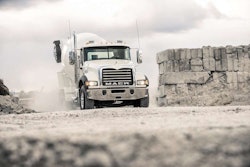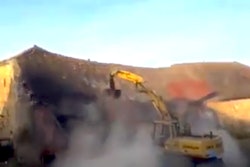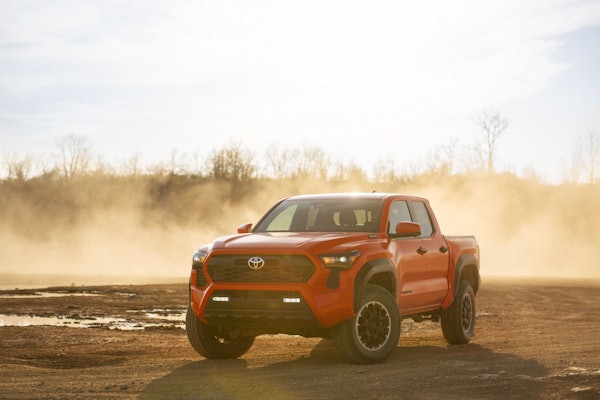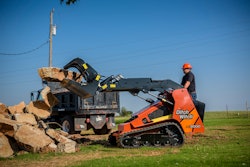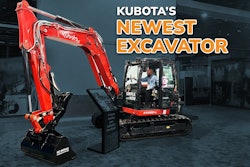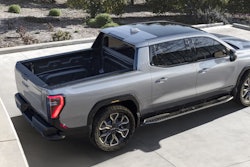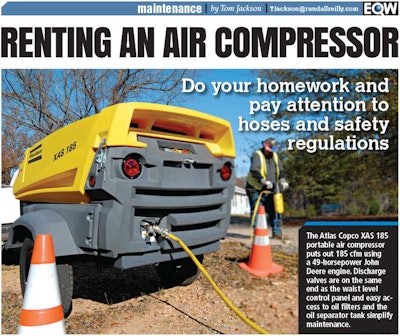
But if you are heading out to the rental store to get a diesel-driven air compressor, there are a few things you need to check before you go. And once you get the compressor on the jobsite, everyone who is going to use it or work around it needs to know the proper operation and best safety practices.
Big air compressors have unique operating characteristics and OSHA governs their safe operation in many cases. Ignorance could lead to an expensive maintenance mistake or worse yet an accident and injury to one of your crew.
Rotary screw
Most engine-driven air compressors for construction applications use what’s known as a rotary screw design. Here, twin screws interlock side by side and turn inside an increasingly narrow air chamber, and thus pressurize the air, says Rus Warner, global air products manager, Doosan Portable Power.
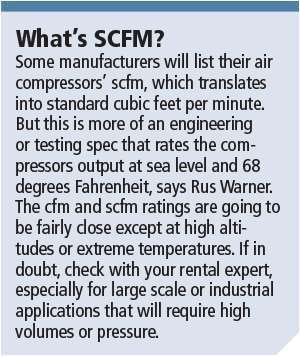
The most popular sizes of these air compressors come integrated into their own trailer for easy towing with a pickup. Larger units may be skid mounted or transported on flatbeds, especially when you get into the bigger sizes for industrial applications like sand blasting.
For a visual demonstration of how rotary screw air compressors work check out the video below.
Piston/reciprocating
For smaller tools and applications that demand less air there are reciprocating or piston style air compressors. Some of these are also engine driven, diesel and gasoline and some run off electrical power. Reciprocating air compressors use a piston to pressurize air and store it in a large air tank. These are typically used to supply air to nail guns, paint guns and some of the smaller impact wrenches that mechanics will use.
Other than size and capacity, the main operational difference between reciprocating and rotary screw air compressors is that the stored air in reciprocating compressor’s tank may run low and cause you to wait while it recharges. Your rental store can help you determine the right size tank and proper horsepower needed for the tools you’ll be using.
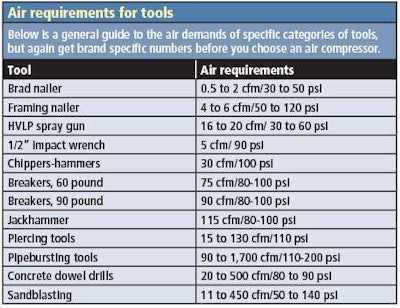
Getting the size right
Sizing a rotary screw air compressor to the application is a straightforward process. There are two measurements to consider: cfm (cubic feet per minute) and psi (pounds per square inch). Simply add up the cfm requirements of any tools you’ll be using simultaneously and choose the air compressor that meets that number while delivering the required psi. But don’t show up unprepared and think you can get away with a guesstimate.
“Using a compressor that provides too little airflow starves the tool of power, which reduces productivity,” says Rich Elliott, product manager, low pressure air compressors, Atlas Copco Construction Equipment. “And picking a compressor that produces more cfm than needed might slow your ROI because they generally have higher price points.”
Most compressors will allow you to adjust the cfm and the psi within certain ranges, but beyond those ranges there is no room for fudge factors. “You can lower your pressure within reason, but you don’t want to go too low because there is a tank that separates the oil from the air before it goes out and there are filters in there. You can collapse your filter system and damage the machine if you push it too low,” says Warner.
The rental store can supply you with the cfm/psi numbers for the compressor, but for tools such as impact wrenches and breakers, the information may be a hard to find. Contact the tool manufacturer or look it up online before you head out to avoid downtime, subpar performance, or damage to your tools later.
If you’re renting for a long time or considering a purchase or rent-purchase agreement you’ll also want to look closely at the fuel efficiency and maintenance costs as well, Elliott says.
See the Air requirements for Tools chart at right for estimates of what different types of tools require in air flow and pressure.
Hoses
There’s a lot to consider about hoses when renting and using an air compressor. First make sure the hoses are rated for the pressure and temperature of the application and sized for the flow rate required, says Massinon.
Also note that you will lose some pressure depending on the length of hose and diameter, says Elliott. On a typical 1-inch diameter hose the crew will lose about five psi for every 50 feet of hose, he says. You will also lose pressure for every coupling in the air hose, Elliott says. “So if you need to operate far from the compressor, such as in a building, you might need to increase the psi to ensure you get the right pressure for optimal productivity.” When I doubt, ask your rental center to do the calculations for you, he says.
Pressure losses also result from kinks and bends in the hose. Using a hose coiled up on the ground is just asking for inefficiency, says Warner. “We recommend contractors place the compressor as close to the work as possible,” he says, “because you want to use the minimum amount of hose possible.”
Hoses should also be inspected before use every day, says Warner. Inevitably they’re going to lie on the ground, get stepped on and run over by vehicles. So look for abrasion, punctures and holes. Also be careful how you store and transport hoses. Don’t abuse them or let them sit next to anything hot like an exhaust muffler or turbocharger, he says.
Air compressor safety
If there is a weak link anywhere in a compressed air system it is the connection between the compressor and the hose and the male/female metal connector fittings between lengths of hose. Should a fitting blow apart under pressure, the loose end can whip around dangerously. People have been killed this way.
An air hose restraint system like the WhipChek holds the two ends of the hose together preventing them flailing around. OSHA requires “some positive means” like this of securing the tool to the hose (OSHA Standards 29 CFR, 1926.302); www.whipchek.com.
Another way to prevent hose whip is to install a safety check valve, sometimes called an OSHA valve. The reason they’re called OSHA valves is because OSHA requires them on any hose with an inside diameter greater than 1/2-inch (OSHA 29 CFR, 1926.306).
Placed between the air compressor air nozzle and the hose fitting, if the valve detects a sudden drop in pressure it closes shut and prevents any more air from entering the hose. “OSHA valves are sized for the pressure and flow rate required by the tools to be used,” says Massinon. “For this reason there is no one-size- fits-all OSHA valve. That’s why OSHA valves are not a standard feature supplied on portable compressors.”
Filters and water
For many applications you will want an air filter and water separator on your air compressor. Compressed air inevitably contains small amounts of dirt, water and oil that can damage tools or interfere with finishes. Clean, dry air is good for any application but aftercoolers and water separators are essential for paint and sandblasting operations. If you have a compressor with a filter and condensate remover, be sure to check them every day.
Tier 4 maintenance
Most of your typical 185 cfm/100 psi portable air compressors use engines small enough that they don’t need diesel exhaust fluid or a diesel particulate filter to clean their exhaust emissions. But ask about the engine maintenance requirements before you head down the highway, especially if you are towing a larger compressor.
If your system uses diesel exhaust fluid you’ll probably need to fill the reservoir once for every tank or two or three of diesel you burn. And a diesel particulate filter may need periodic regeneration to burn off the accumulated soot inside the filter. On some models this may require you to cease work until the regen is completed.




